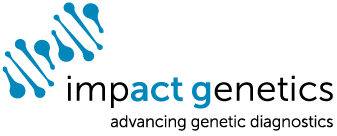
Joan’s Story – Uveal Melanoma Prognostic Genetic Testing
Joan speaks about her decision to undergo prognostic UM tumor testing. This is followed by interviews with Dr. Tara McCannel (UCLA) and Dr. Bertil Damato (UCSF) who discuss how they use results of UM genetic testing and the importance of this testing to their patients.
Info for UM Patients
1. Know your risks
Take control of your life and your treatment.
The risk of metastases, even after initial treatment, can be estimated.
Genetic results indicate whether your chance of developing metastasis is high or low. Patients and their doctors can use this information to tailor their surveillance and treatment plans. Low risk patients are reassured and may need less surveillance. High risk patients may increase surveillance and may select more aggressive treatment options.
Studies have shown that patients are able to cope well with a poor prognosis. Patients feel that they have greater control, are able to plan more effectively and can make more informed medical choices.
2. Future cancer surveillance
With sufficient tumor sample, Impact Genetics’ uveal melanoma (UM) testing can accurately identify genetic alterations within cancer cells.
The UM genetic test used by Impact Genetics is the most comprehensive test available. Multiple methods of testing are used to detect specific genetic abnormalities in eye tumor cells (isodisomy, monosomy and trisomy). These abnormalities can indicate the chance that the cancer will spread to other parts of the body.
3. Dependable results
Each individual finding is reported clearly, including appropriate interpretation. Impact Genetics does not report low risk results without confirmation that actual tumor tissue was analysed. This reduces the risk that a good result is incorrect (false negative). No other test offers this confirmation.
4. When to test
Testing is performed on tumor cells obtained from the affected eye. These cells can be obtained by biopsy before or after plaque or proton beam radiotherapy or can be taken from an enucleated (removed) eye.
Patients who have had radiotherapy can still benefit from Impact Genetics’ UM testing if enough tumor is present.
5. Future testing
With consent, Impact Genetics will bank any remaining DNA at no additional cost. When new tests are developed, Impact Genetics will identify which patients may benefit from additional testing and inform specialists.
6. Cost effective
Please contact Impact Genetics for pricing.
◀ What is Uveal Melanoma || Info for Uveal Melanoma Clinicians ►

